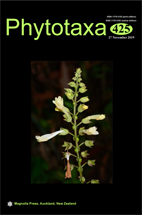Abstract
Seed shape in the order Ranunculales is described with the objective of characterizing the morphological seed types in the families of this order and to establish a correlation between seed shape, plant structure and life style.
Based on previous work in model plants (Arabidopsis thaliana, Lotus japonicus, Medicago truncatula), we have used the J index to estimate the percentage of similarity of the image of a seed with a geometric shape. The images of seeds of model plants resemble cardioid or cardioid-derived models, while seeds from other species with rapid life cycles resemble other, also simple geometrical figures. In general, seed shape may help establishing the relationships between taxonomic groups.
Three types of seed morphology are distinguished in the Ranunculales based on values of J index. In the first type, seeds in the Berberidaceae, Euptelaceae and Lardizabalaceae, adjust well to an oval. The second type, seeds in the Papaveraceae, adjust well to the cardioid model, and the third type, seeds in the Ranunculaceae, adjust well to diverse geometric shapes, including the oval, truncated cardioid, Fibonacci spiral and ellipse. In the Ranunculales, seed shape is varied and often related to geometrical figures.
The presence of cardioid derived models in the Papaveraceae supports our hypothesis that seeds resembling the cardioid are frequent in plants with rapid life cycles.
Ranunculales
